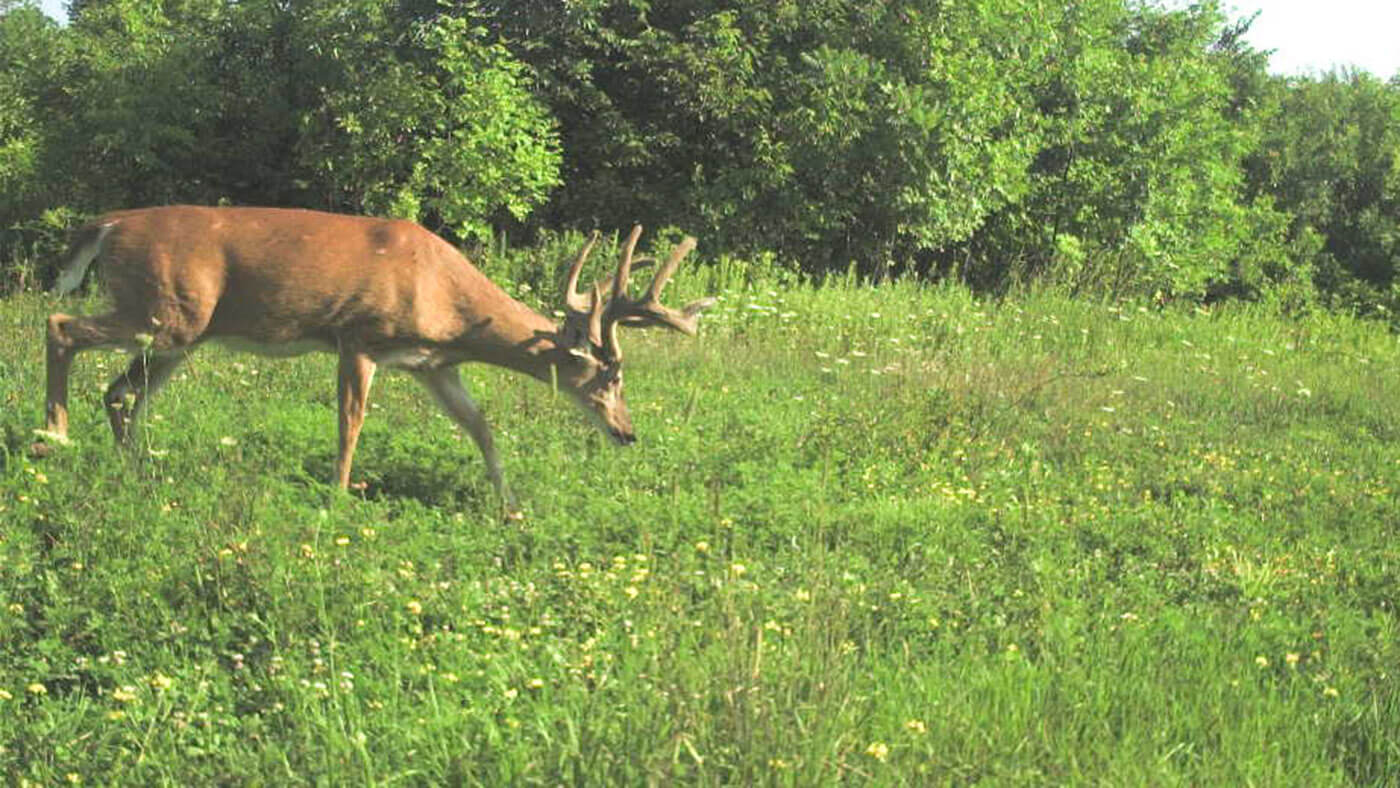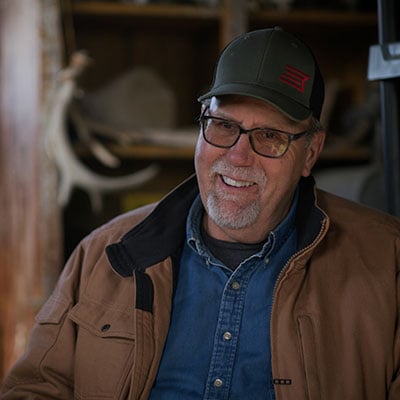- Savage Blog
- CWD in SW Wisconsin and Why Everyone Should Care About CWD
CWD in SW Wisconsin and Why Everyone Should Care About CWD

This is the last of a series of three articles in which Doug Duren shares information about Chronic Wasting Disease (CWD) along with his experience, perspective as a landowner and hunter in Southwest Wisconsin’s CWD endemic area, and why people should care about CWD.
Read the first article: What is CWD and What Can Be Done About It?
Read the second article: CWD and Deer Overpopulation Issues
In two previous articles we discussed what CWD is and what can be done about it; how deer population especially over-population, can affect habitat and herd health, including CWD transmission, spread and prevalence.
This article discusses deer hunting on my family farm and our experience with CWD and the “Why should we care about CWD?” question.
Deer Hunting and CWD on the Duren Farm and Southwest Wisconsin
CWD became personal for me in 2017, when I killed the first deer on our farm to test positive for CWD, a 2.5-year-old buck.
We had been learning about and following the spread of CWD, a Transmissible Spongiform Encephalopathy (TSE) an always fatal neurological illness in deer and other members of the cervid family (white-tailed deer, mule deer, elk, and moose) since it had been identified about 60 miles south of our farm in 2002. We had been getting all our deer tested and following safe handling instructions recommended by DNR, but with that first positive, the abstract became reality.
Another deer tested positive in 2017, another younger buck. In 2018 we had 2 more positives: a first rack buck and a young doe.
We kill a lot of deer on our farm. Those first positives represented about 5% of the deer we killed, and that percentage stayed low through 2020 as we continued to harvest an average of 30 deer a year on the 600 contiguous acres we hunt. Through 2019 it was all younger deer that tested positive, while at the same time we killed some 4- and 5-year-old bucks and older does that came back clean. It appears younger deer were coming in from high population areas south of us and bringing CWD with them.
An older doe was the only CWD positive of the 30 deer taken and tested in 2020, but it concerned us that the disease was now established in our area. The deer numbers locally and county wide were high. In a county where 85% of the land is deer habitat, estimates were 65-75 deer per square mile of habitat. With that amount of contiguous habitat and high deer numbers, left unchecked since 2012 because of reduced management tools, CWD was spreading more quickly and growing in prevalence.
This time lapse shows the spread of CWD in southwest Wisconsin.
 Graphic courtesy of Wisconsin DNR and USGS National Wildlife Health Center.
Graphic courtesy of Wisconsin DNR and USGS National Wildlife Health Center.
We killed and tested 40 deer in both the 2021 and 2022 deer seasons and CWD positive deer increased dramatically. In those two years 60% of the 20 total antlered bucks we killed tested positive. Does tested at 12% positive.
So far in 2023 we’ve killed 35 deer including 13 antlered bucks and although we’ve not received all the CWD test results, the positive rates look to be running about the same. The good news is we’ve had some older bucks and does come back “CWD Not Detected”.
We have accepted that CWD is here to stay in our area, and we will continue to do the best we can to work towards a healthier herd and ecosystem. We continue to have fun hunting deer and welcome a lot of hunters to our farm to help with the harvest. We’re not too discouraged, although a bit frustrated, with the lack of management of the deer herd and CWD over the last 10 years. We have volunteered to have a CWD testing kiosk on our farm and sponsor two carcass disposal dumpsters in the area. We also host a “Doe Derby” to encourage more antlerless deer harvest. I like to say, “we’re doing what we can with what we’ve got” and our deer hunting traditions, old and new, continue.
Why Everyone Should Care About CWD
I’ve thought a lot about the question “Why should I care about CWD?”. I’ve spoken to lots of people and experts about that question and I’ve concluded that everyone should care about CWD. Here’s why.
Animal Welfare: No thinking person, hunter, or non-hunter wants to see an animal suffer. CWD has a horrific effect on infected deer, especially in the clinical stages. It induces a distinctive spongy deterioration in the brains of affected animals. Following a prolonged incubation period of one to two years, this leads to weight loss, loss of awareness, impairment of bodily functions, and ultimately, death. So, anyone concerned about animal welfare should care about CWD.

Healthy Deer Population and Landscape: It’s not uncommon to see groups of 75 to 100 deer in fields in the Driftless Area, as is the case in other parts of Deer Country around the United States. Next time you see a group that big, realize that in endemic areas of Southwest Wisconsin as many as half of that herd are CWD positive, carrying and spreading the disease and leaving it on the landscape wherever they go. In those areas it’s becoming more common to see sick deer on the landscape. That’s not sustainable. If you care about hunting healthy deer, healthy wildlife and a healthy ecosystem, you should care about CWD.
I’ve written mostly about midwestern whitetails, but research has shown population level impacts caused by CWD on a mule deer herd. Melia T DeVivo, David R. Edmunds, et al., published peer reviewed results from their Wyoming research called Endemic Chronic Wasting Disease Causes Mule Deer Population Decline in Wyoming. The study “…demonstrated the long-term consequences of endemic CWD on a free-ranging mule deer population. Chronic wasting disease caused significant declines in the study mule deer herd…”. Just that line should give anyone interested in mule deer or mule deer hunting has good reason to care about CWD.
Big Giant Bucks: CWD is more prevalent in bucks than does. Because the disease takes about 2 years to kill a deer, if prevalence is low, fewer deer tend to not contract the disease early in life and mature deer are more common. As prevalence increases, deer contract the disease earlier in life and studies have even shown fawns can get CWD in utero from a CWD positive doe. As a result, in high prevalence, endemic areas, the herd begins to trend younger and older bucks become less common, even if you “let him go so he can grow”. So, anyone interested in hunting mature bucks should care about CWD and what it does to herd age structure.

Human Health Concerns? The World Health Organization (WHO) and Centers for Disease Control (CDC) have been clear that: “To date, there is no strong evidence for the occurrence of CWD in people, and it is not known if people can get infected with CWD prions”. However, they do recommend, because of different results from studies and ongoing research, it is important to prevent human exposure to CWD.
I accept that I have likely been exposed to CWD as I have field dressed positive deer and have handled hundreds of heads that have come through the testing kiosk. I protect myself as best I can and I’m not losing any sleep over it. Like any risk we learn about in life, we should follow science-based, common-sense recommendations and continue to do what we can to minimize our risk of exposure.
I’ve made the decision to not consume meat from a CWD positive deer, even if it looks healthy. That is a personal choice that everyone must make, and we should respect people’s choices and not make that choice for anyone else. So, getting your deer tested makes sense to me, even if you are going to eat it. If you plan to serve it to anyone else, you can then say, “this deer was tested for CWD, and the result was X” and they can make that decision themselves. If you’re a parent and plan to feed venison to your children, doesn’t it make sense that you would want to know the CWD status of that deer?
Whether CWD will ever become a human health issue is an open question. There are many examples of zoonotic diseases (animal diseases that can infect people, and vice versa) and scientists really cannot predict whether CWD will become a human health issue. That alone should give us a reason to care about CWD.
If you decide to not eat a CWD positive deer but are conflicted if you are “wasting the deer” think about this: 1. You have removed an infected animal from the landscape, and it is no longer spreading the disease to other deer. 2. If you properly dispose of the carcass after butchering and the meat if you decide not to eat a positive deer, you have removed that infectious material from the landscape. 3. You have saved that animal from a slow miserable death. That doesn’t seem like a waste.
Conservation Funding: Big game species, especially those in the cervid family, are to state departments what major sports teams are to college athletic programs: they fund much of the work or teams of the rest of the department or school. If CWD threatens, changes, reduces, or eliminates the deer and elk herds on a wide scale, how will natural resource agencies fund management of the “lesser” game species? Billions of dollars for wildlife conservation are generated by deer and elk hunting. Millions of related jobs and industries will be affected.
CWD is one of the biggest conservation challenges of our lifetime. Conservation is thinking about what is best for the resource and looking to the future. Conservation is about realizing that “It’s not ours, it’s just our turn”.

